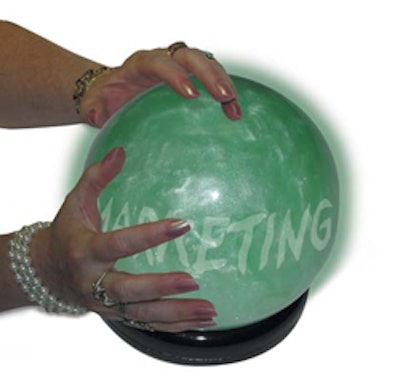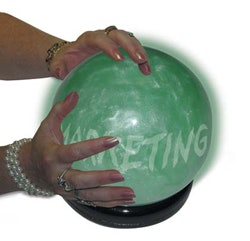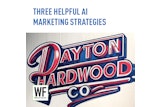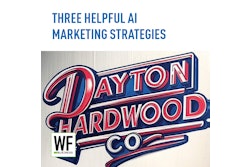

Last quarter's profits were low and it's time to make a comeback this summer and fall. How can marketing help? Will the company name painted on your trucks suffice? Is an ad in the Yellow Pages enough? Perhaps, but a carefully crafted long-term marketing plan would likely be more profitable. Effective marketing, once understood, can help you attract homeowners and remodelers to your business and keep your profit margin in the black.
Unfortunately, marketing is perhaps the most misunderstood term in business. At times, even those who are given the title of "marketing manager," "director of marketing," or "vice president of marketing" are unclear and sometimes confused in their understanding of marketing's role. The way management discusses marketing suggests there is plenty of room at the top for clarification of this critical business function.
It does not come as a surprise that companies question the effectiveness of marketing. "We spend a lot of money and what do we have to show for it?" is a question that's often asked.
One reason for this confusion is that marketing seems to be shrouded in myths and misconceptions. Eliminating these is an opportunity to see the marketing function in a clearer light and to take advantage of the powerful, positive role marketing can play in growing a company.
Here are nine myths that can thwart successful marketing efforts.
Myth #1. "Marketing can be done on a shoestring." How to market without spending money is a popular subject. There always seems to be an article, seminar, or book promoting "marketing on a shoestring." Why doesn't someone write about "accounting on shoestring," "selling on a shoestring," or "manufacturing on a shoestring?" Why is it just marketing that gets the shoestring treatment?
It's often difficult to understand that marketing is an investment in the future of a company, a product or a service. In other words, marketing costs money. Depending on what needs to be accomplished, the price tag on marketing can be high. And it will be substantial if a company wants to differentiate itself from the competition, achieve significant visibility, and gain market share.
Bruce McDonald of McDonald Hardwood Floors in Denver, Colo., says that although word-of-mouth referrals do generate a significant number of business leads for his company, he must also invest a substantial amount of money on advertising. He focuses the company's efforts on electronic media purchases such as television and radio. "It's expensive, yet it's not expensive," says McDonald. "Expensive is when it's not working; inexpensive is when it works."
Managers need to distinguish the "expensive" marketing from the strategies that work. It's easy to waste marketing dollars. Without a clear understanding of objectives and tactics, money is literally thrown away.
Myth #2. "Marketing supports sales efforts." This is one of the most popular marketing myths and it's particularly prevalent with business owners and company executives. They see marketing as assisting the organization's sales activities. The sales department is the heavy and marketing is the water boy.
Companies have been known to do things backwards—and marketing is close to the top of any list. Here's a simple way to set the record straight: Salespeople are interested in orders; marketers are interested in customers. The first task is to make sure there is a market for the product or service being offered. That's a marketing task. If there is a market, then marketing identifies the customers, creates the message, and sets in motion a plan to elicit interest from the target constituencies. Now, sales is ready to go to work.
Myth #3. "Marketing takes too long." There is a second, often unspoken, part: "We need sales now." Marketing isn't an instant answer or a miraculous cure-all for slumping sales. The best quick fix to increase sales is to offer generous incentives, give away big discounts, or simply slash prices. These are sales strategies and they have nothing to do with marketing.
Marketing takes time. But a carefully crafted and well-executed marketing plan produces continuing positive sales results over a long period without having to resort to price cuts.
Phil Smith, president of Alberta Hardwood Flooring in Edmonton, Alberta, agrees. "It's a long-term investment. Any time you do marketing, you never know what is going to work. If you do radio, TV, billboards, or print, you never know if it's going to pay off. Sometimes it does and sometimes it doesn't—initially. The longer you have your name out there and the more visible it is, the more people recognize you. It just has to be consistent."
Smith recalls a story of a couple who came to him to buy hardwood flooring after seeing his booth at a home and garden show—two years ago. Smith says that alone made the appearance at the show worthwhile.
McDonald believes that consistency and frequency are critical. He says that it's critical to "brand yourself" so that when it's time to remodel or build, customers think of you. "You don't know when they are going to be ready," he says, so it's critical to get your company name out there and keep it out there.
Myth #4. "Marketing is just another word for advertising." If there ever was a common misconception about marketing, this is it. Marketing and advertising are often used interchangeably by those selling and producing advertising.
Depending on the goals of the marketing plan, advertising may be one component of an overall program that includes a variety of promotional and public relations activities. The full effect of marketing is achieved by using a number of tactics at the same time to create a costeffective impact. In addition to advertising, appearing at trade shows, and leaving cards and brochures at the local Parade of Home's show or in your builder's model home are all ways to get your name in front of the public. To help create name recognition, Smith's employees all wear t-shirts and golf shirts with the company logo on them and Alberta Hardwood Flooring continually makes appearances at renovation and home and garden shows in Edmonton and Calgary. In addition, each year Alberta Hardwood participates in a home showcase in conjunction with a local builder. The showcase provides an opportunity for great exposure since new homes with Alberta Hardwood floors are featured on television as part of the program.
Above all, encourage word-of-mouth referral. If your clients liked your work, ask them to tell a friend or neighbor and leave cards with them. Word of mouth is free and it is powerful marketing tool.
Myth #5. "We don't need research; we know our customers." It's easy to assume we know our customers. Why should we be confident? We've been serving them for years. But times change and so do customer demands and expectations.
A marketing consultant was asked to review a series of help wanted ads that had failed to attract candidates. The consultant reported that the ads were appropriate for a period of high unemployment but were out of synch with the current low unemployment situation. Aimed at the "recent college graduate" and those seeking "a good career," the ads offered little more than "a golden opportunity."
This is a basic but good example of how even a modicum of research of recent college graduates who fit the profile would have been helpful in designing an employment package and an advertising campaign that fit their expectations.
Research can be beneficial on several fronts—both to find out how to use marketing dollars, and to identify upcoming design trends.
McDonald does research of a sort: He finds out when and where he can reach future and current clients by asking customers which nightly news they watch. This enables him to place his 30-second TV spots in the most effective slots.
Smith stays a step ahead of clients by listening to interior designers, who tell customers, "This is what you need." Smith says they "get to the designers first and find out what they see happening." The proactive approach enables them to tap into new trends. "We're showing them what is available; they're not showing us," Smith says.
Myth #6. "Marketing is just frosting on the cake when sales are up." It's true. Marketing is often ignored during periods when sales are strong. When sales drop, there's never enough money for marketing.
These common attitudes reflect a lack of understanding of the function of marketing. A consistent, unified, coherent marketing program is designed to produce a constant flow of business to minimize the "hills and valleys" so many companies face.
The process of influencing how customers view a company and its products must be continuous to maintain its marketplace position and to deny competitors an advantage. Influencing how a company is perceived is fundamental to its success, not frosting on the cake.
Myth #7. "Marketing is OK for big companies." It is often assumed that it takes a big company with extensive resources to benefit from a marketing program. While it's true that large companies tend to take marketing seriously, companies with proportionately smaller budgets—including most wood flooring contractors—can benefit from marketing.
For example, most hardwood flooring contractors recognize the need to differentiate themselves from both larger and smaller competitors. One way to do this would be to emphasize the company's specialty, which could be, for instance, inlays, medallions, or custom designs.
After adopting a marketing message that fits the company's objective, the business could then set out to position itself as an upscale, yet affordable hardwood flooring contractor. Although the contractor would be working with a limited budget, each marketing activity would serve to reinforce the theme of affordable elegance.
Myth #8. "Marketing only wastes money." There are good reasons to hold this view because many so-called marketing decisions actually waste financial resources. One common mistake is to purchase advertising without knowing when the ads will run. For example, your marketing person buys radio spots thinking they will run during drive time, but the ads are actually broadcast in the middle of the night. When the advertising fails to produce positive results, someone will correctly conclude that spending the money was a waste. Marketing isn't the culprit, however. It's people who lack an understanding of the subject that cause the problem.
Marketing that is based on solid information and focused on the correct audience produces positive results. But like any other discipline, good marketing takes talent, knowledge, and experience.
Myth #9. "Marketing and sales are one and the same." It can be argued that this should be at the head of the line— the No. 1 marketing myth. So why leave it to the end? Because this is where the confusion begins and ends. Some companies try to disguise the salesperson's role and give them the title of "marketing representative."
Often those who claim to understand the distinct roles played by marketing and sales have difficulty keeping functions separate in practice. It's so easy to fall into the trap of viewing marketing as "sales support."
The success of the dot-coms in raising venture capital was a marketing success story. Good marketing connects with what already exists inside someone's head. In this case, it was greed. Because investors "wanted to believe," the money flowed freely. The salespeople only needed to take orders. It wasn't until there was nothing to show for the dollars invested that the fantasy faded.
Home Depot's Expo stores are another excellent example of a marketing-driven retail concept. It took the company a few years to find the right formula, but found it they did. The stores attract crowds because they are designed to appeal to the lifestyle "pictures" home owners have in their heads of kitchens, baths, floors, custom appliances, lighting, and outdoor living. It isn't all the appliances and lighting fixtures and floor tiles that make the difference. It is placing them in appealing and compelling settings that connect with the customer. In creating what is nothing less than a Disney World of the Home, Expo is a marketing triumph.
The objective of marketing is to seal the deal, while the goal of sales is to facilitate the order. Separate and distinct as the two functions may be, they are also two sides of the same coin.
If the marketing is on target, choosing your services as a contractor makes sense to the customer. The role of sales in this process is to stay close to the customer, interact appropriately, and serve as a guide and counselor. In this way, marketing and sales complement each other in a way that results in creating willing—and at times—eager customers.
The failure of companies to harness the full power of marketing inhibits growth. Eliminating these myths can open the way to benefiting from marketing as well as sales. It would be nice if we lived in a world where a simple ad in the Yellow Pages set your career on fire, but alas, you must use additional strategies to keep the schedule full and customers satisfied.






























